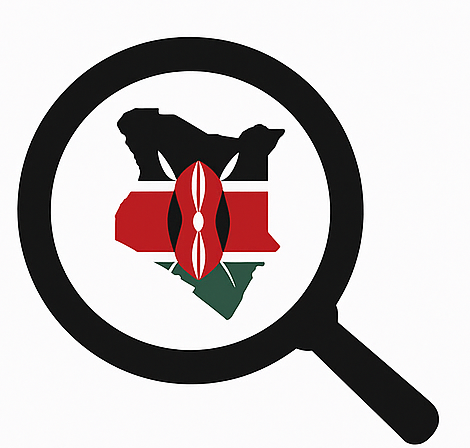By Donald Agwenge
The Kenya Integrated Household Budget survey reveals that 68.3% of Kenyans depend on wood fuel whereas 13.3%, mainly urban dwellers, rely on charcoal for cooking. This over reliance on tree products has led to massive logging, reducing our forest cover way less than the desirable 10%.
This laden trend prompted the government to clamp down on charcoal prompting some consumers to use kerosene. These perilious trends ought to be addressed to avert the side effects on health and environmental impacts of these fuels.This ban was, however, rushed without sustainability measures, leading to loss of jobs for many young people who depended on charcoal for their livelihood.
In 2007, the government through the Ministry of Energy and Vision 2030 project had an ambitious energy policy and enacted the Energy act to help move the rural masses from biomass fuels to modern energy. The operationalization of the policy saw the creation of Rural Electrification Authority to lighten up the countryside. Jubilee’s last mile connectivity also had the same goal, but the statistics still show that the rural populace still depend on charcoal and wood.
The choice of fuel for many Kenyans is not the cleanliness of the fuel, but the cost(Cheap), availability and abundance. The government must be playing an intelligent game of cards to reduce the abundance of charcoal vide the ban, which has led to the increase of price of charcoal from an average of Sh 80 per 4kg tin in 2017 to an all-time high of about Sh 130. Looking around the Lake Region, I see the availability and abundance of water hyacinth. Can this pestilential weed replace wood as a source of fuel?
Water hyacinth, binomially named Eichhornia crassipes by scientists , has a high reproduction rate making it ever abundant in Lake Victoria and other water masses in Western Kenya. Approximated by Kenya Maritime Authority to be covering over 12,000 hectares in Kenya’s portion of the Lake. It has hindered fishing and free movement of people and goods in the Lake.Several scientific research have been carried out to find out whether the weed can be used as fuel.
Seven weeks ago, aquatic and ecological science students at the University of Eldoret reported that the weed has all the qualities of a good fuel source.Researchers from Madonna University working handy with colleagues from University of Southampton conducted a study to develop a Water Hyacinth briquette machine and examine the properties of the resultant briquette fuel. They made a machine using the Screw technology, with an efficiency of 84% and a kilogram of the resultant fuel could burn for thirty minutes in an open stove.
Another research published in the International Journal of Energy and Environmental Engineering Vol 7,titled, ‘The Potential of Water Hyacinth as a Biomass Briquette for Heating Applications’ indicates that the stems and leaves of the weed release a lot of thermal energy when burned depending on its moisture content and several other factors. They positively found out that hyacinth briquettes have a calorific value of 14.55MJ/Kg which qualifies it for use as a thermal and light energy source.
Another peer reviewed article posted in the ‘International Journal of Sciences : Basic and Applied Research’ explored water hyacinth as an alternative to traditional fuels. The research was conducted in various beaches in Kisumu and Homabay counties and it conclusively stated the worth of adapting hyacinth as a source of energy, though on a basis of its abundance – not calorific value.
The Lake Region Economic block has no option but to turn this noxious weed from a curse into a blessing- a blue economy resource. The five counties and three East African countries sharing the lake must marshal plans to build a hyacinth briquette production industry and utilize the hyacinth harvester lying idle in Kisumu. This will reopen the lake to navigable standards by removing the weeds for economic gains. Many young people will be employed to harvest, dry and carbonize the hyacinth. The region will also generate millions in income from the sales of the briquettes which will replace charcoal because of its long burning life, non-pollutant nature and low cost.
Apart from it’s potential as a green source of fuel, hyacinth can be used to make fertilizers due it’s high nitrogen content, can be used in purification and sewer plants among many other uses.
Kenya Vision 2030 identified fuel as a key enabler to its pillars. Such sustainable, affordable and green fuels must therefore be adapted by the government if it has to achieve its blueprint and the MDGs.With the elimination of the hyacinth from the Lake, Kisumu county can open the once key inland port in East Africa. Homabay Pier, Port Victoria, Kendubay Pier and Mbita Points will begin to operationalize once again and will open up for movement of goods and services.
The main challenge for implementation, as usual, will be lack of funds. Methinks with the great concern against global warming and deforestation, players like UNEP, World Bank, Ministry of Environment, when adequately approached by our counties, can chip in and turn the lake from green to blue again. This as well comes after a successful blue economy conference where donors and partners promised to inject millions into sustainable blue economy. Youths, who are nowadays bundled out as thieves and dishonest people who cannot be trusted for government appointments, (President remarks after appointment of Old Awori) will however, be trusted with drying hyacinth, and selling the water hyacinth briquettes to earn a living.
The Writer is a commentator on emerging issues.
donnargss@gmail.com


